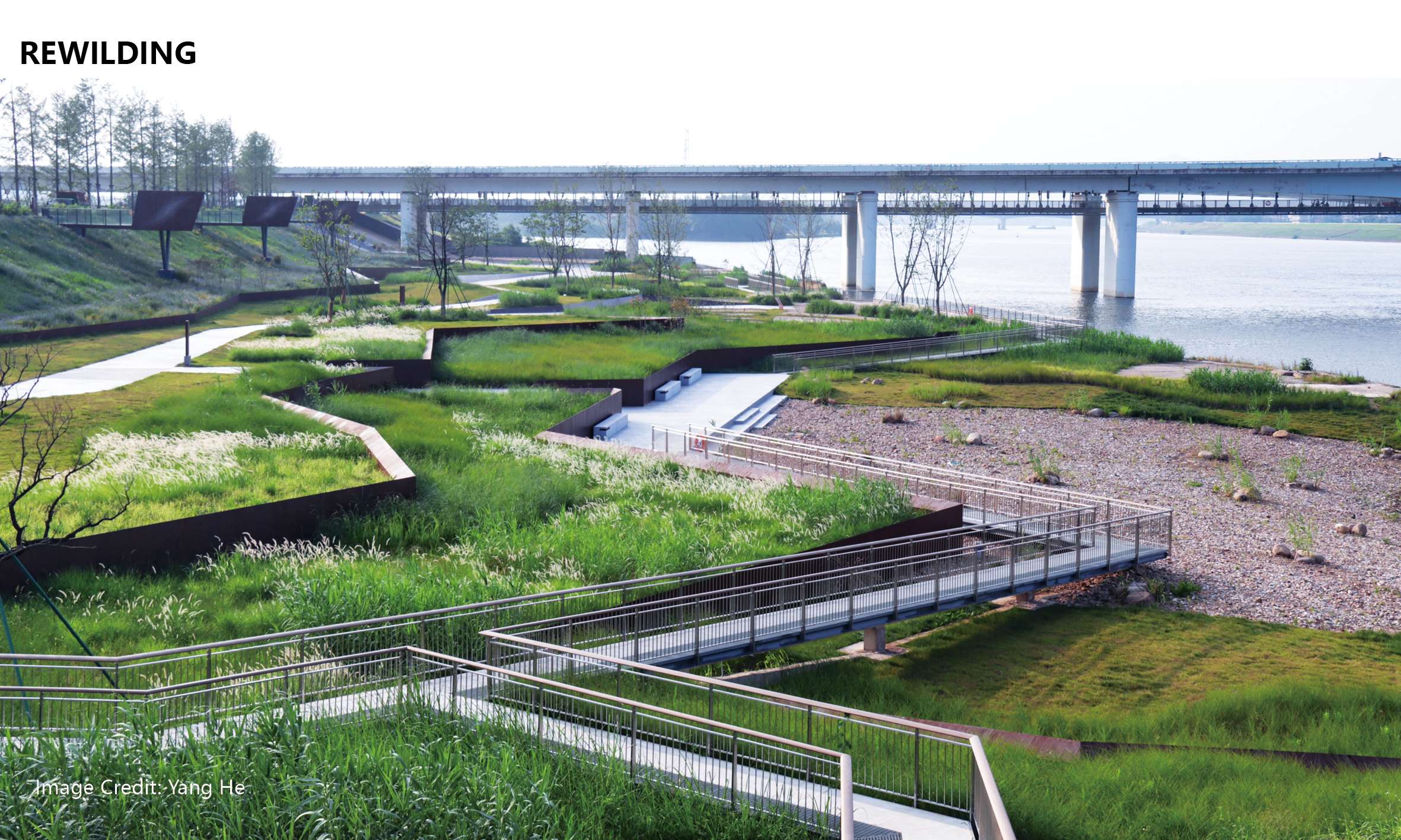
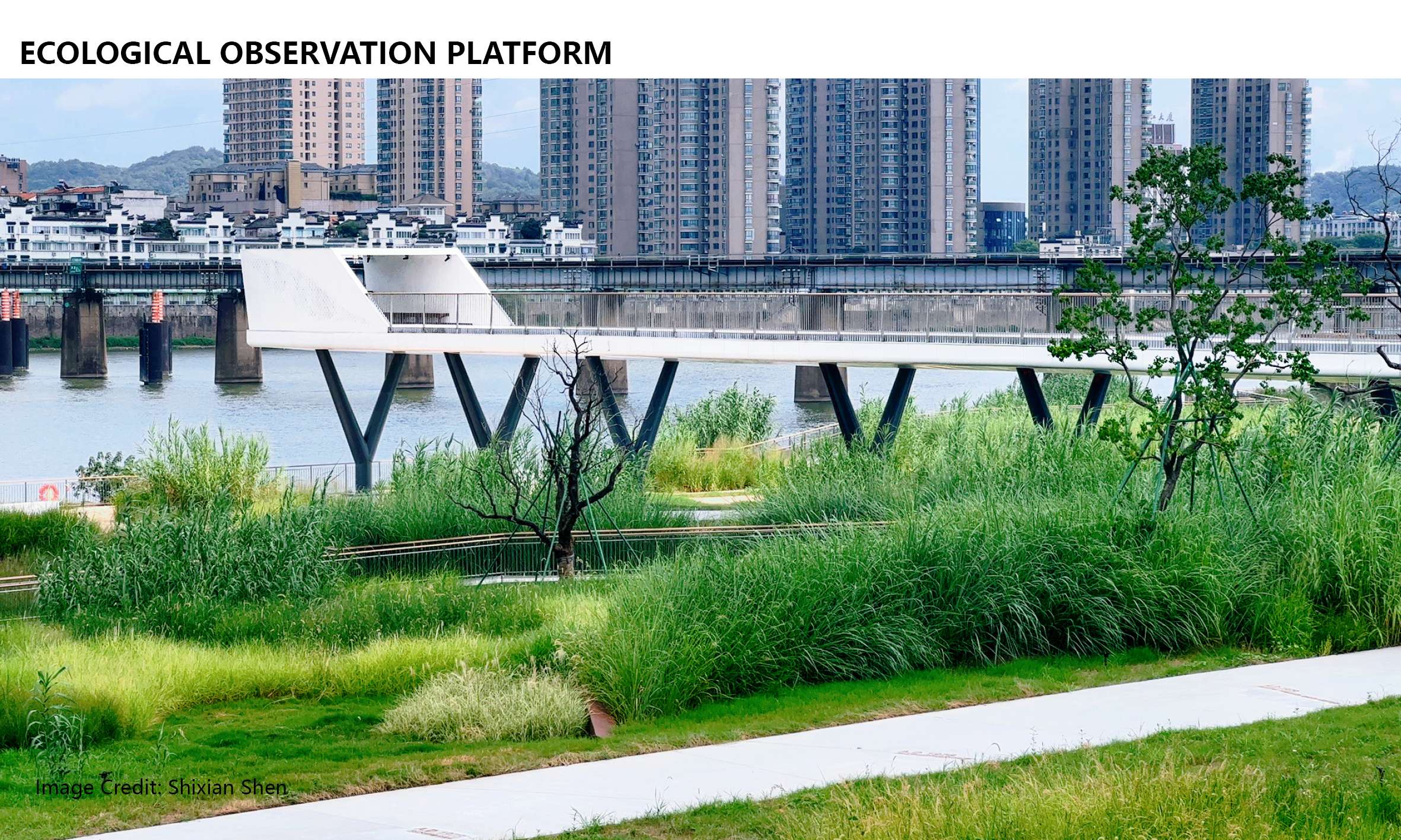
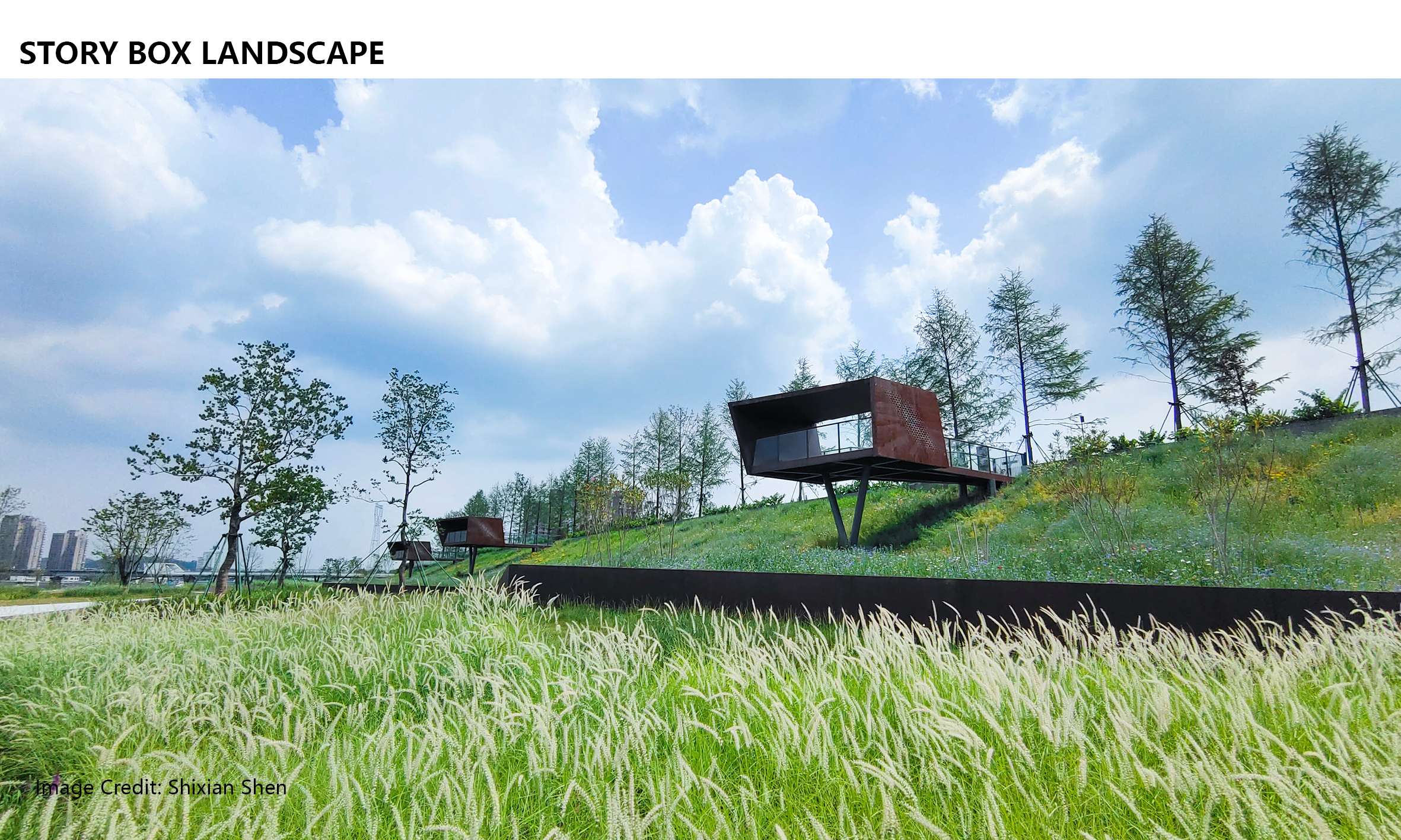
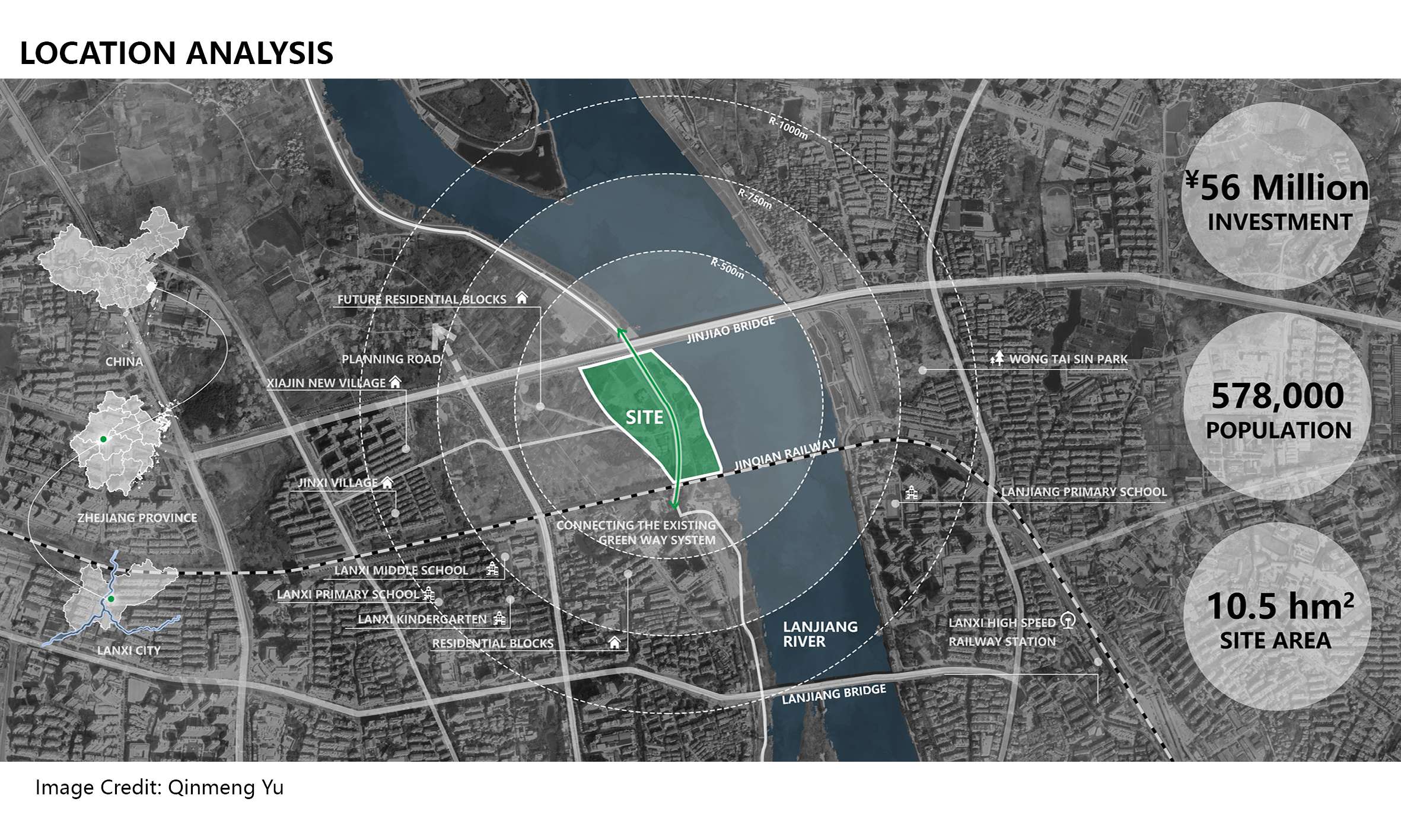
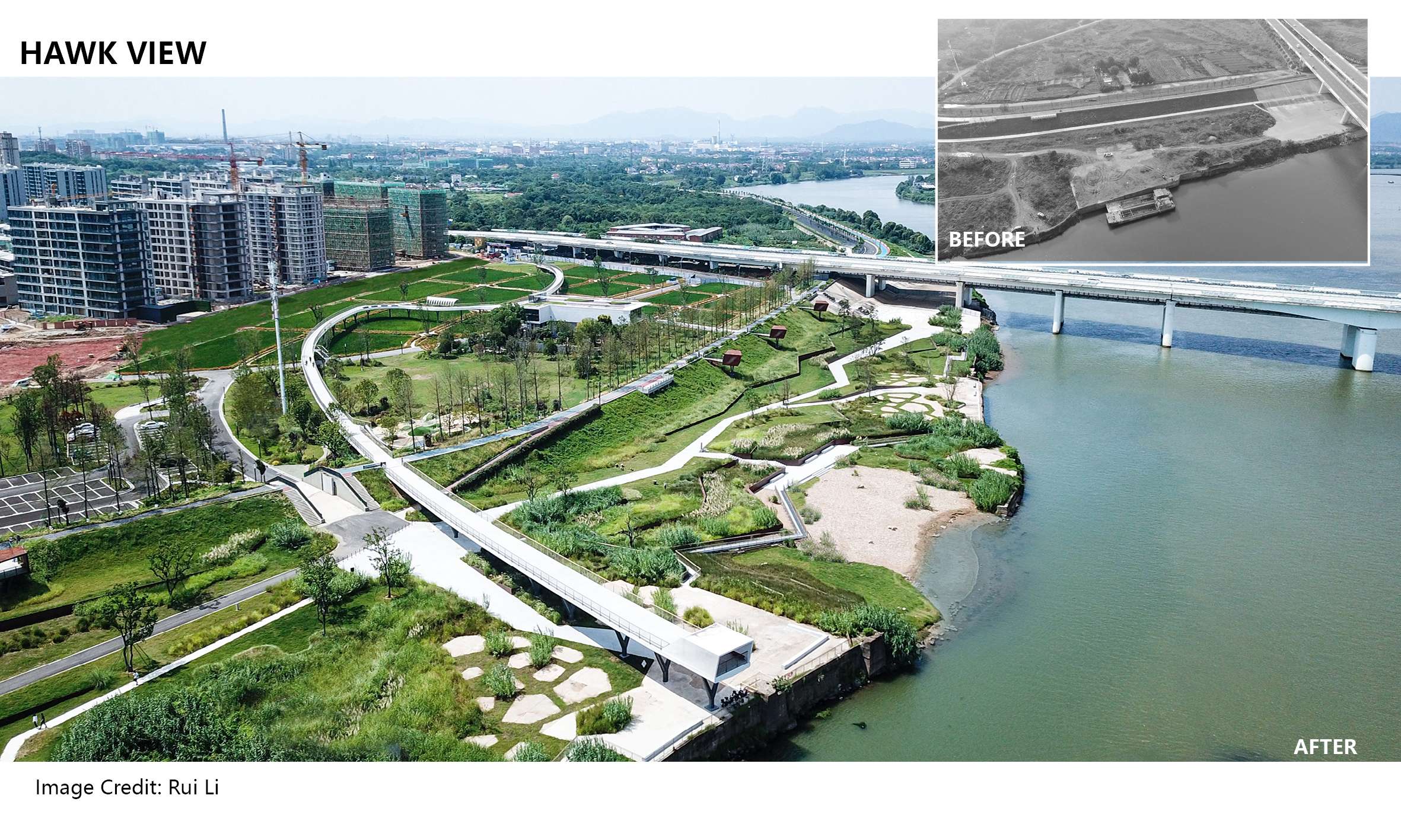
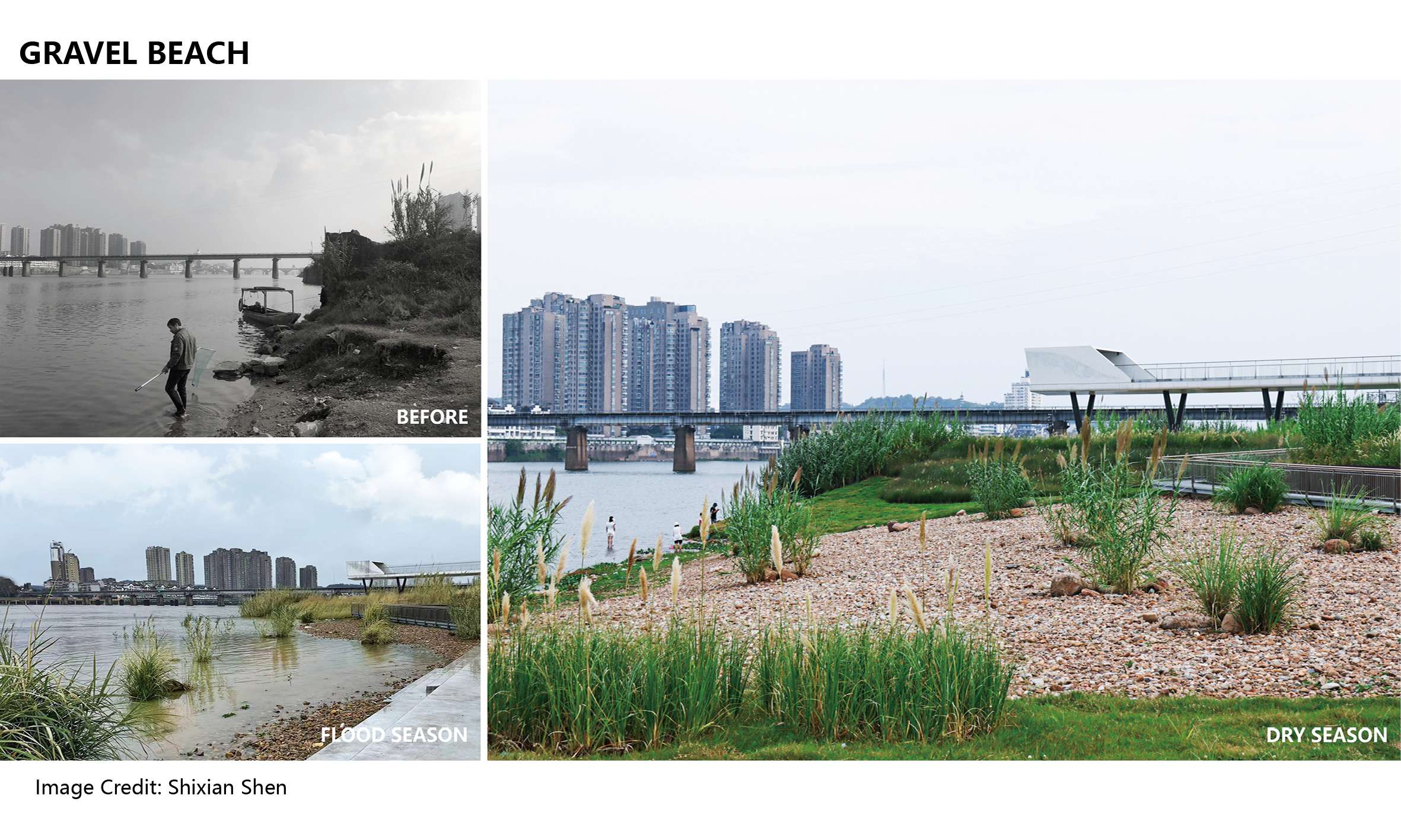
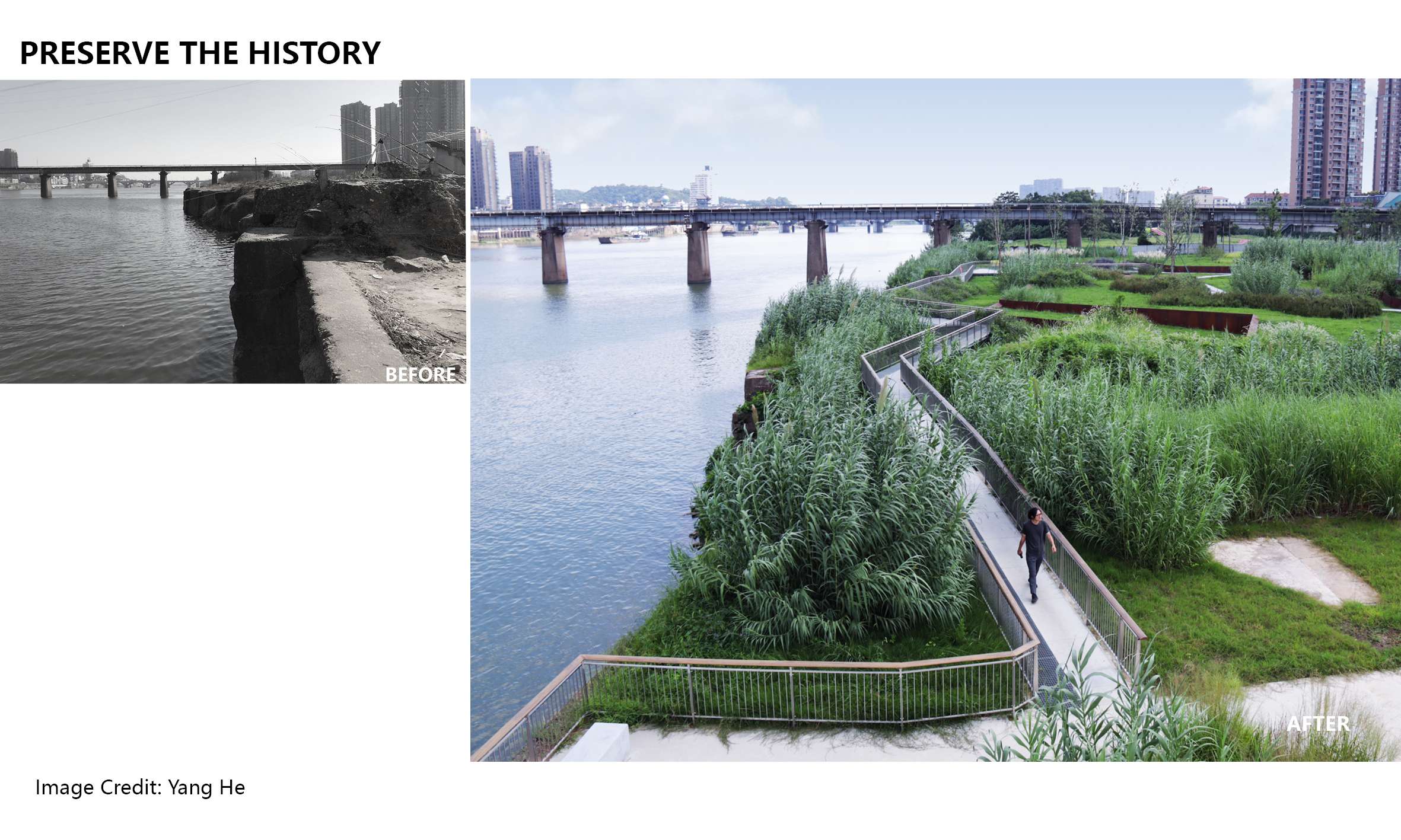
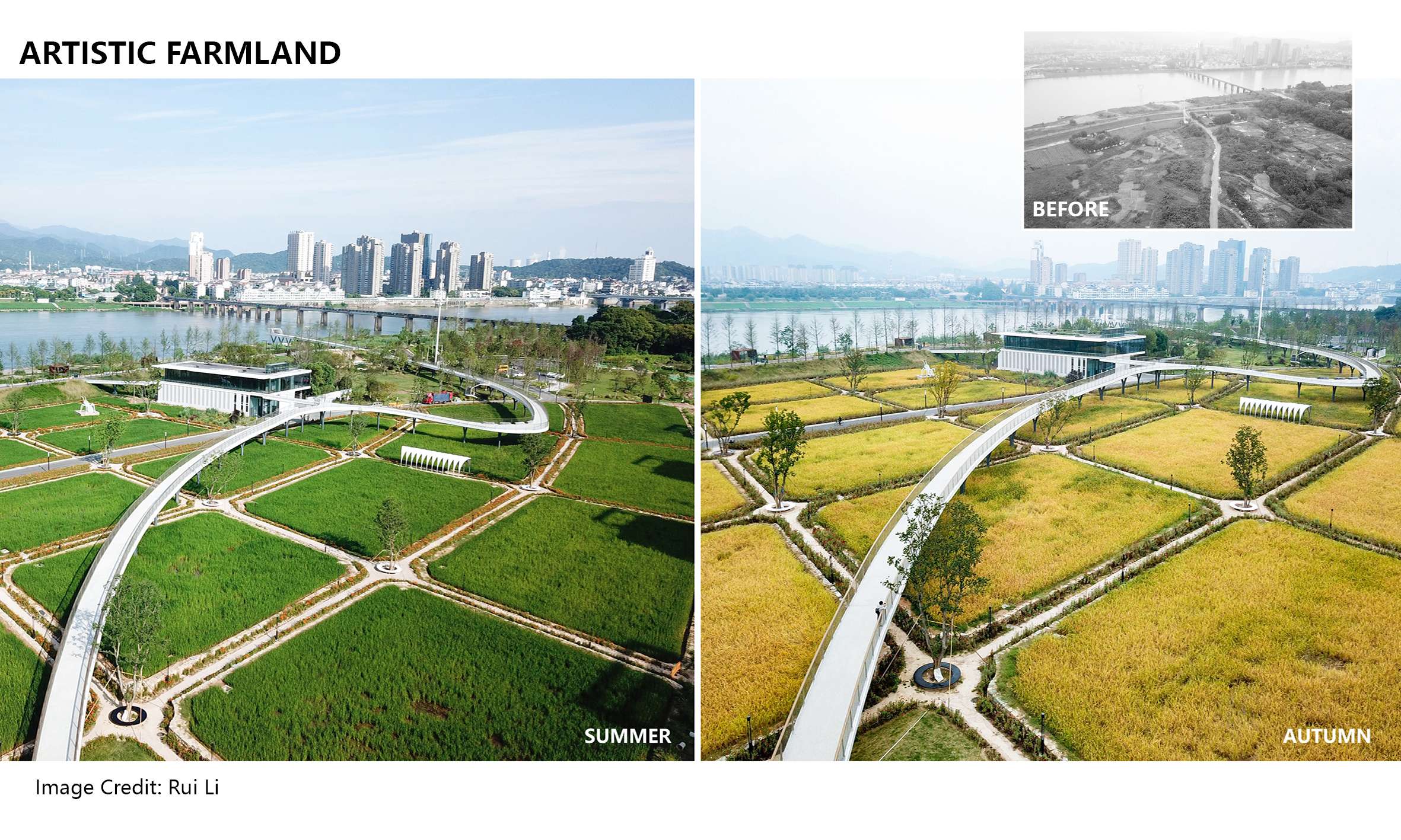
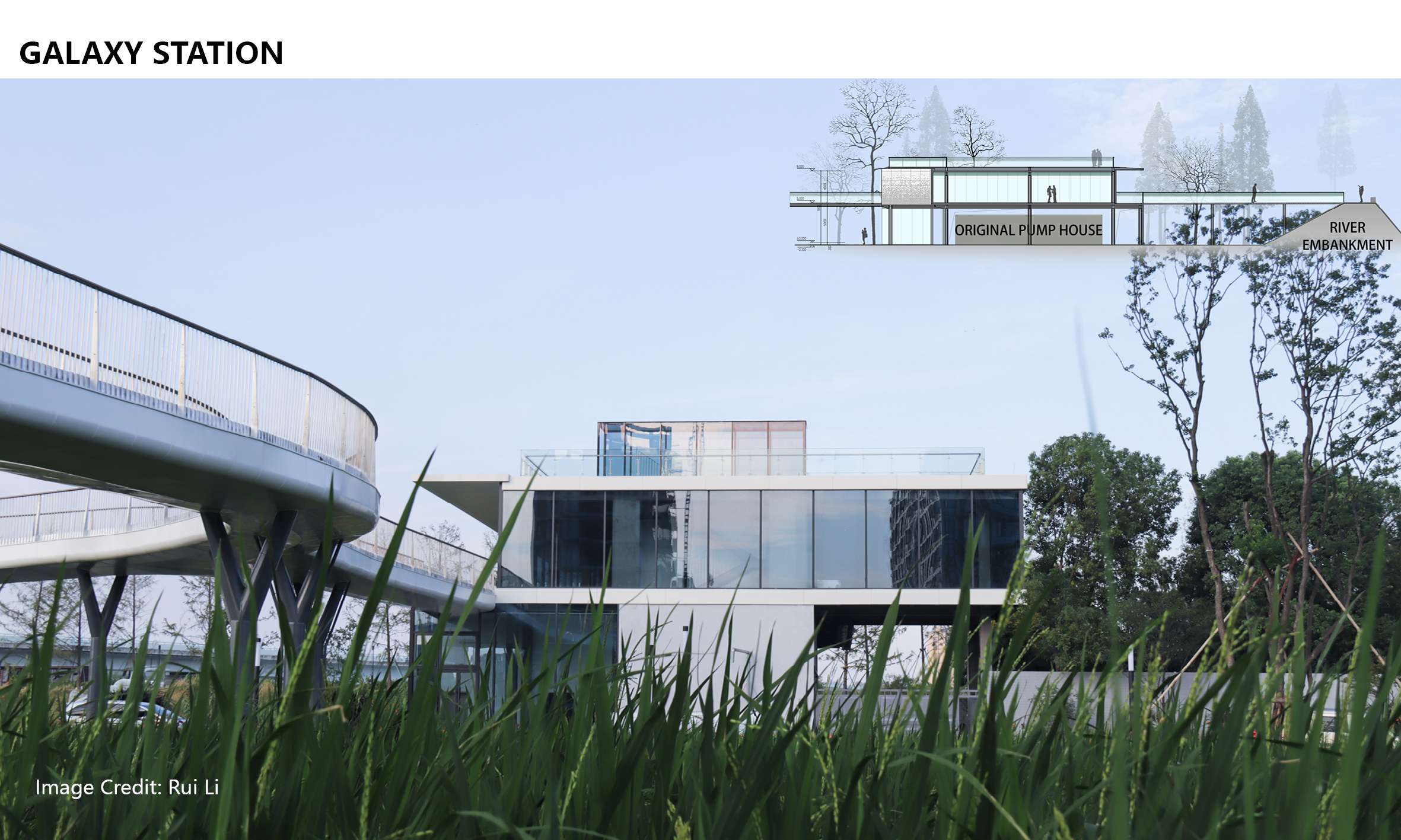
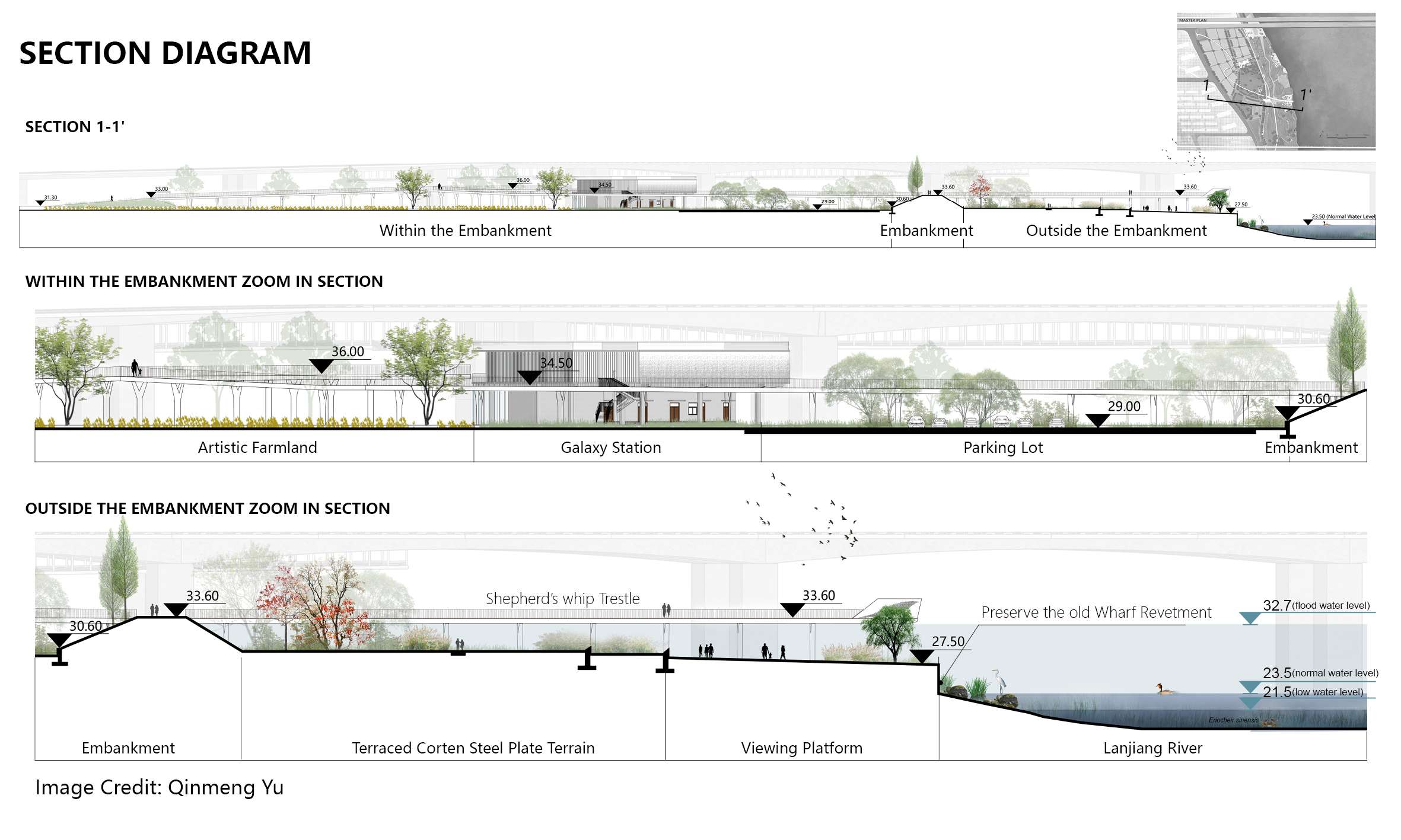
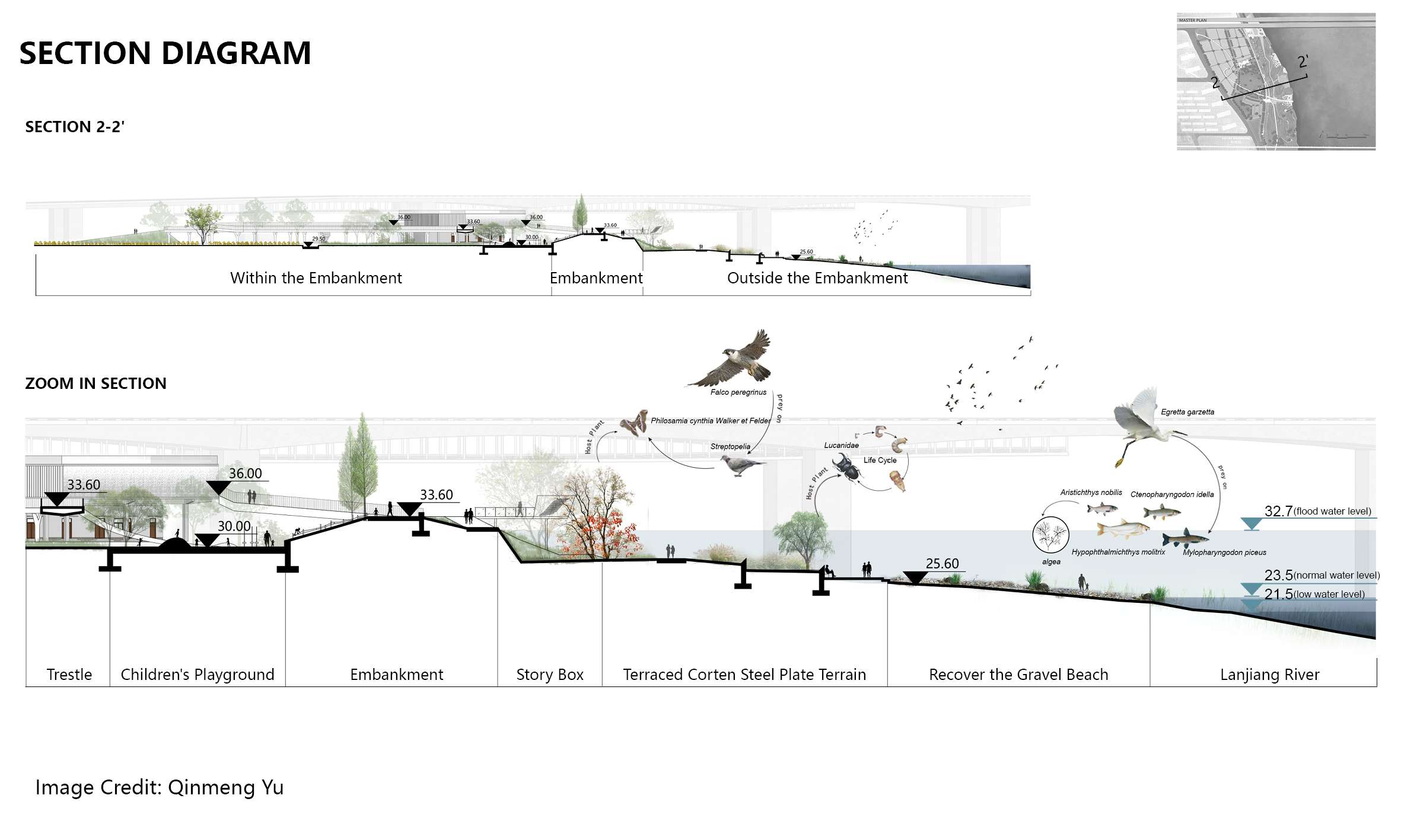
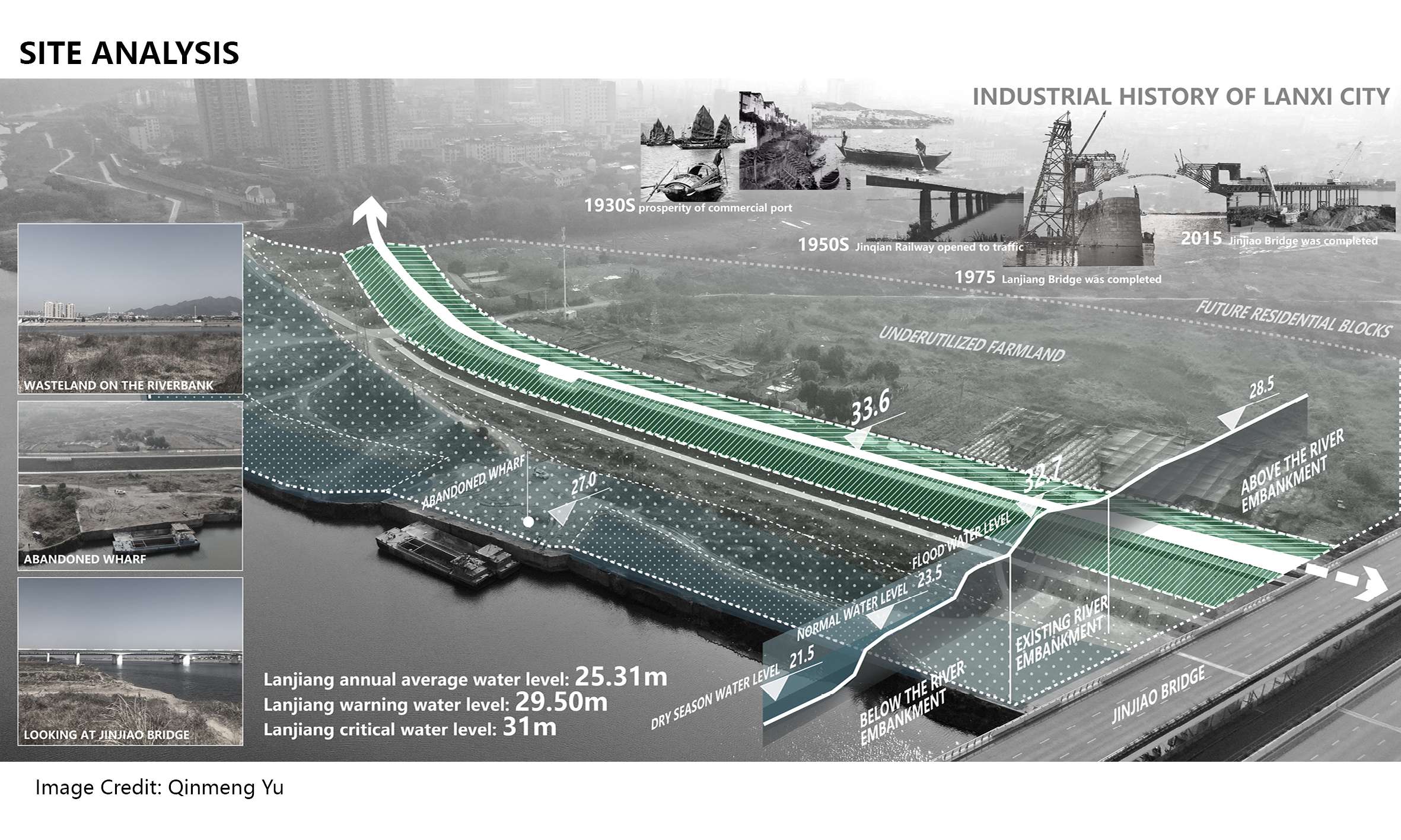
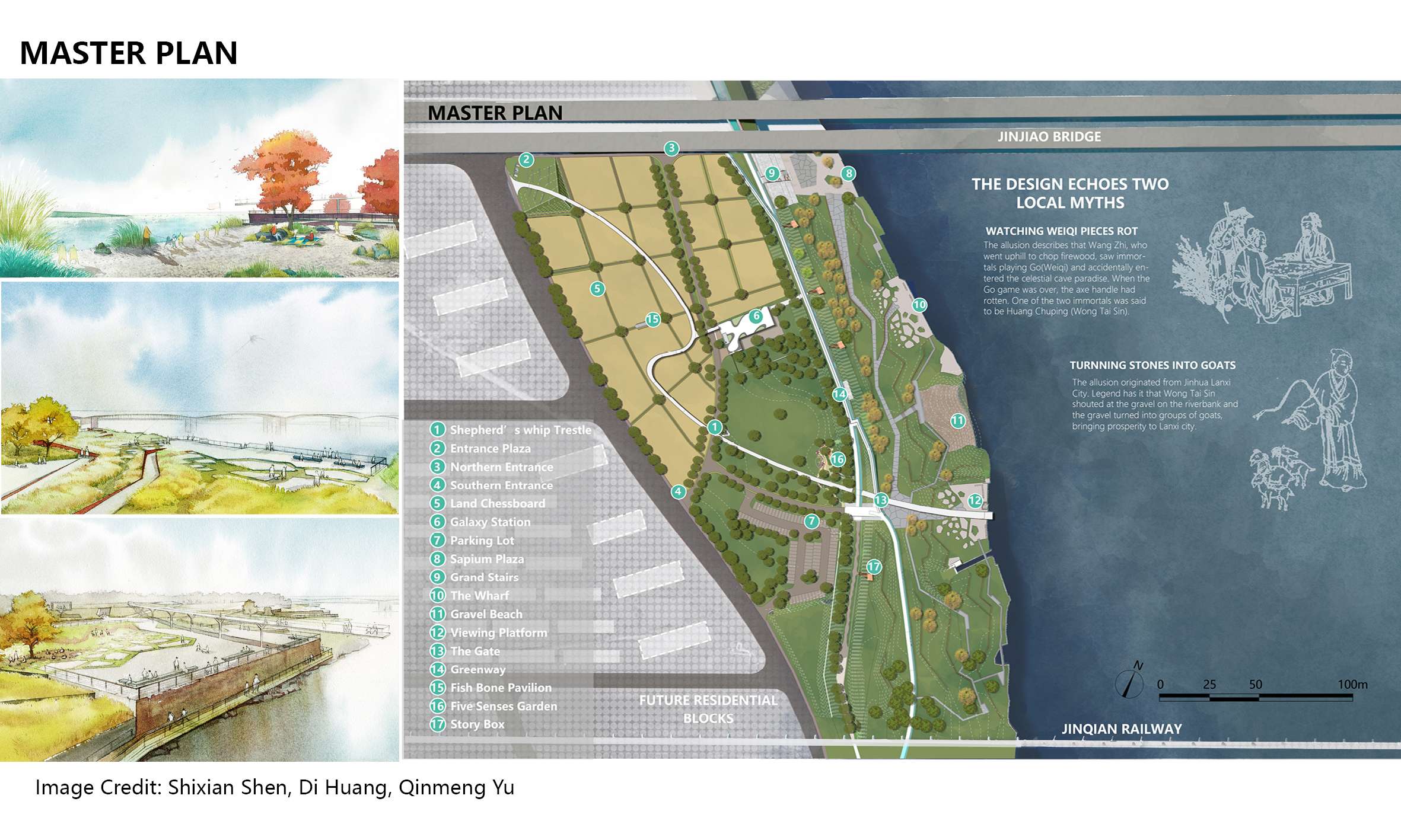
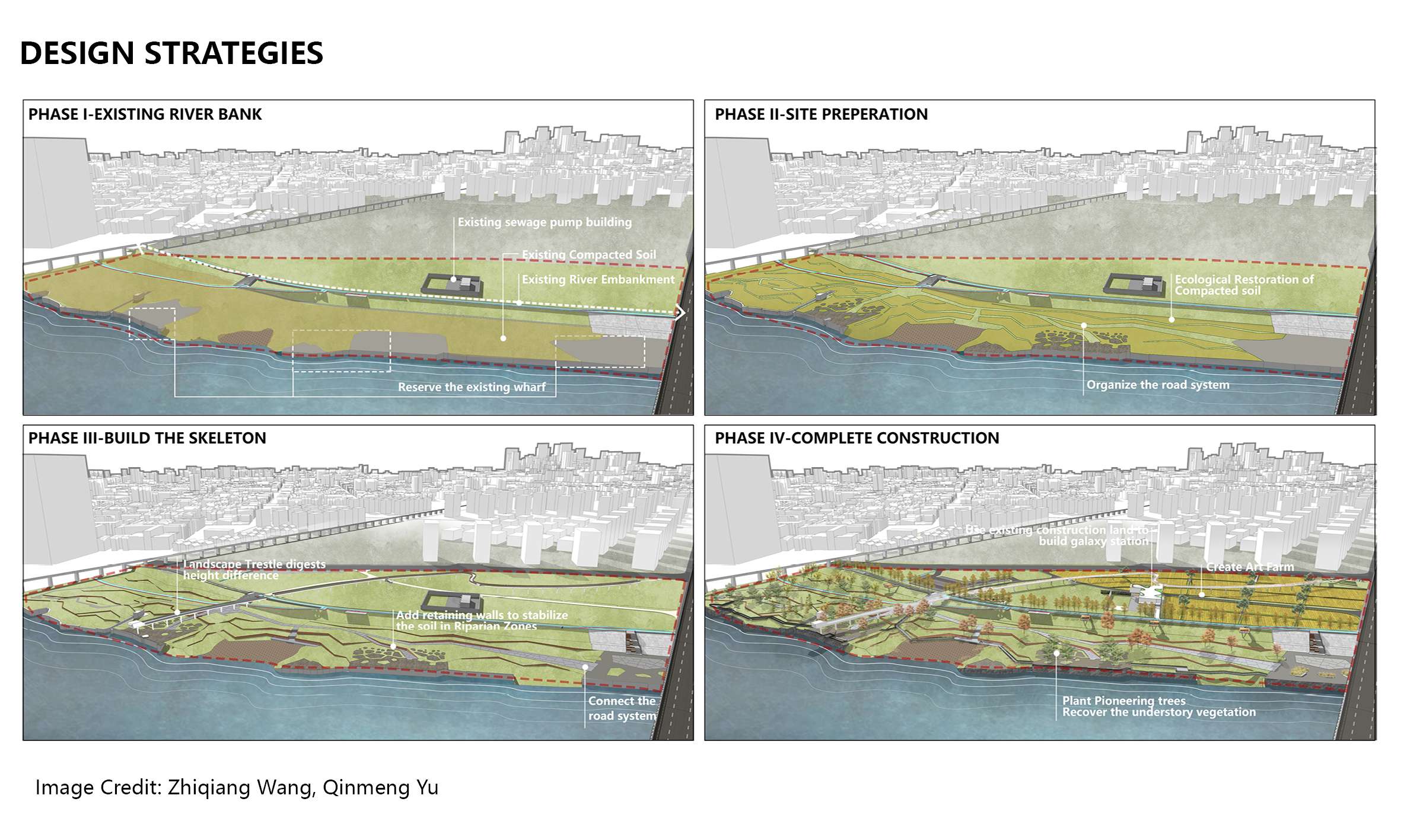
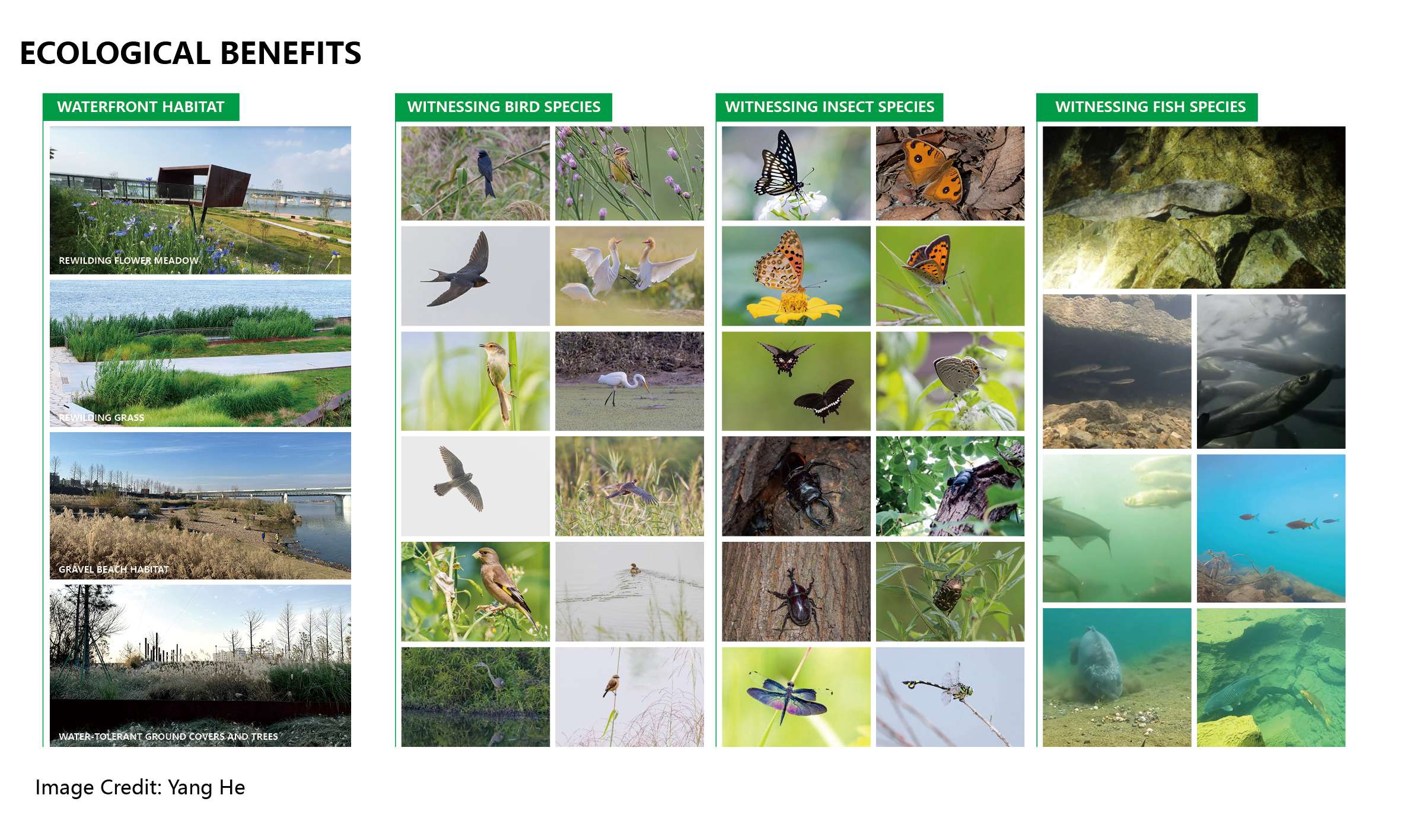
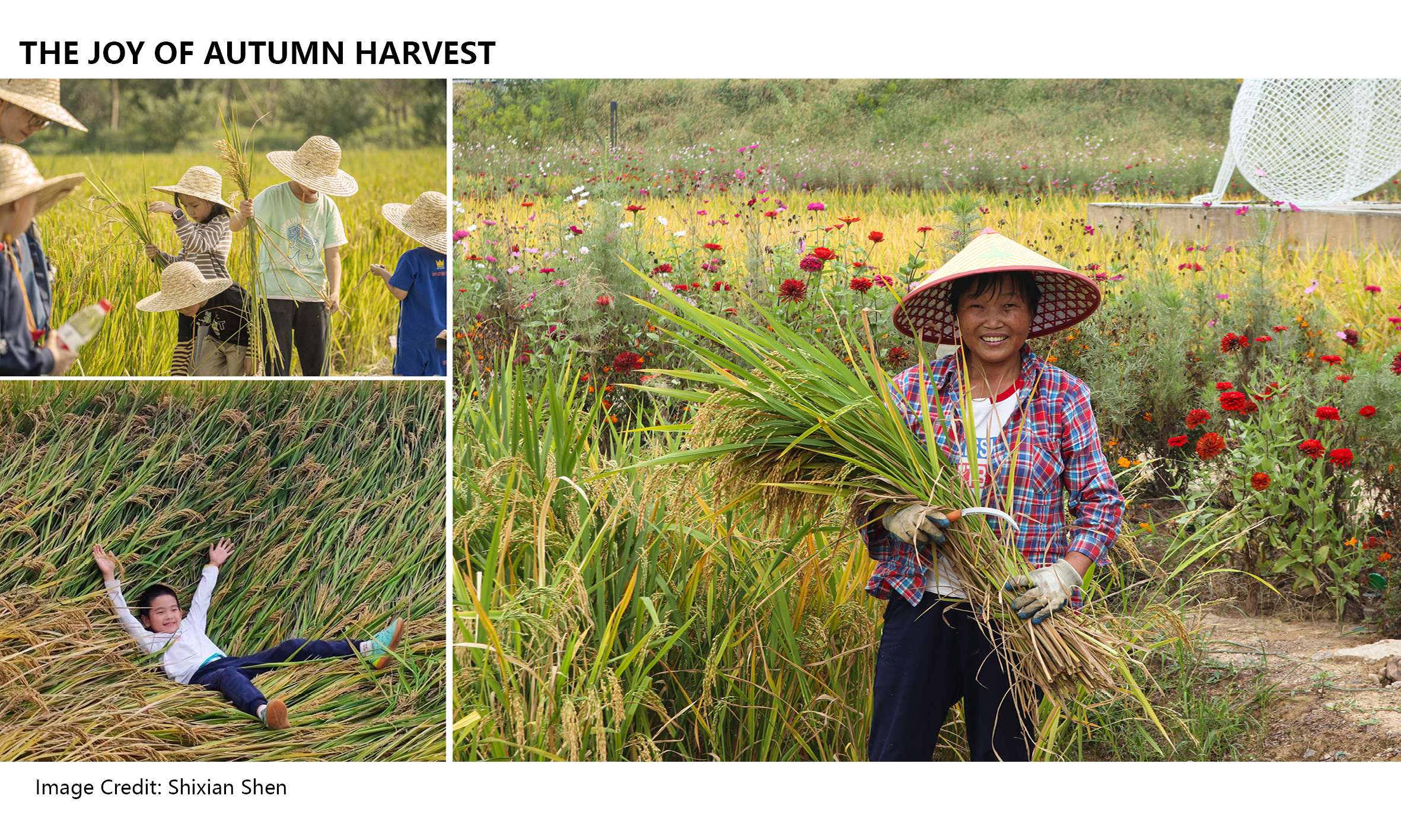

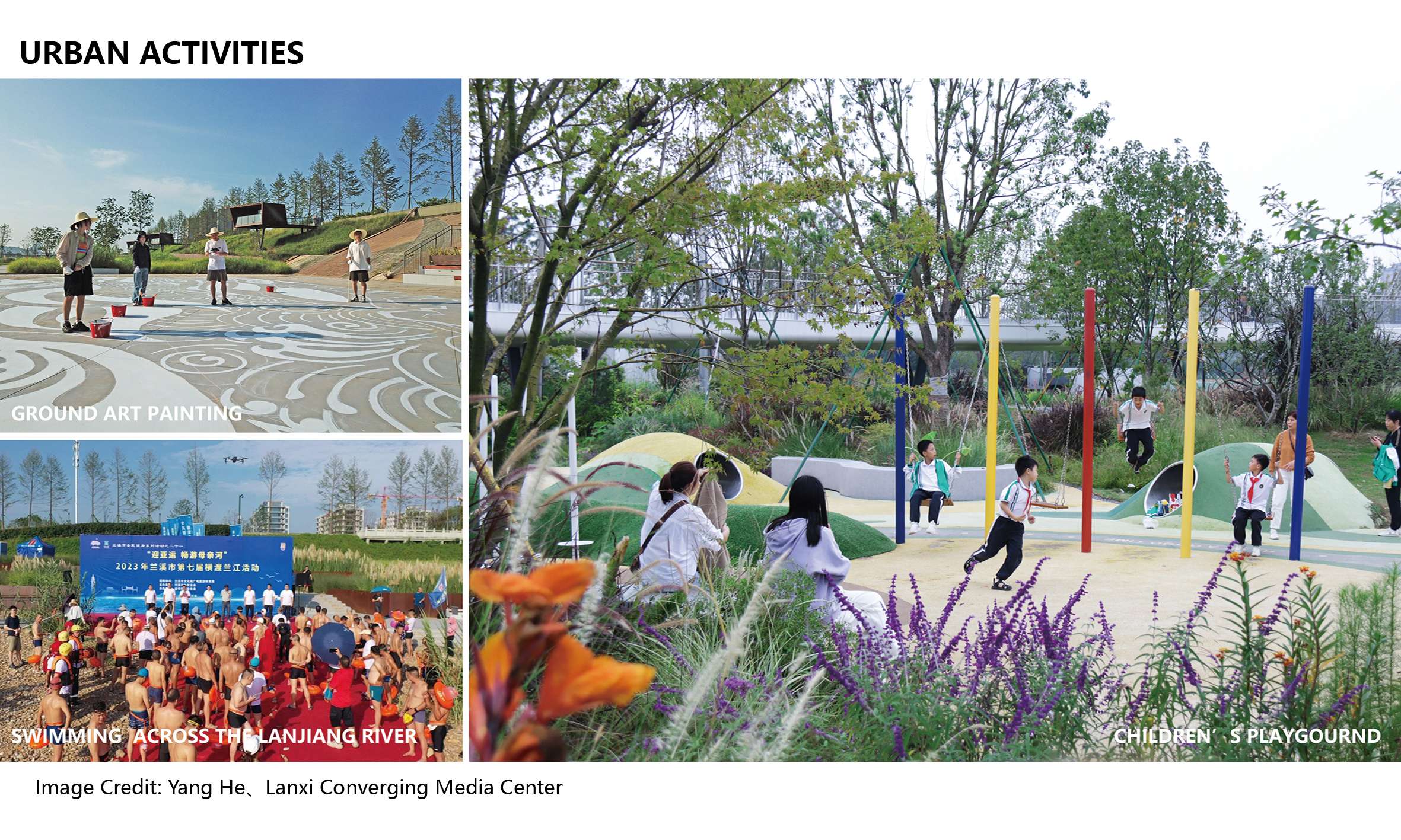
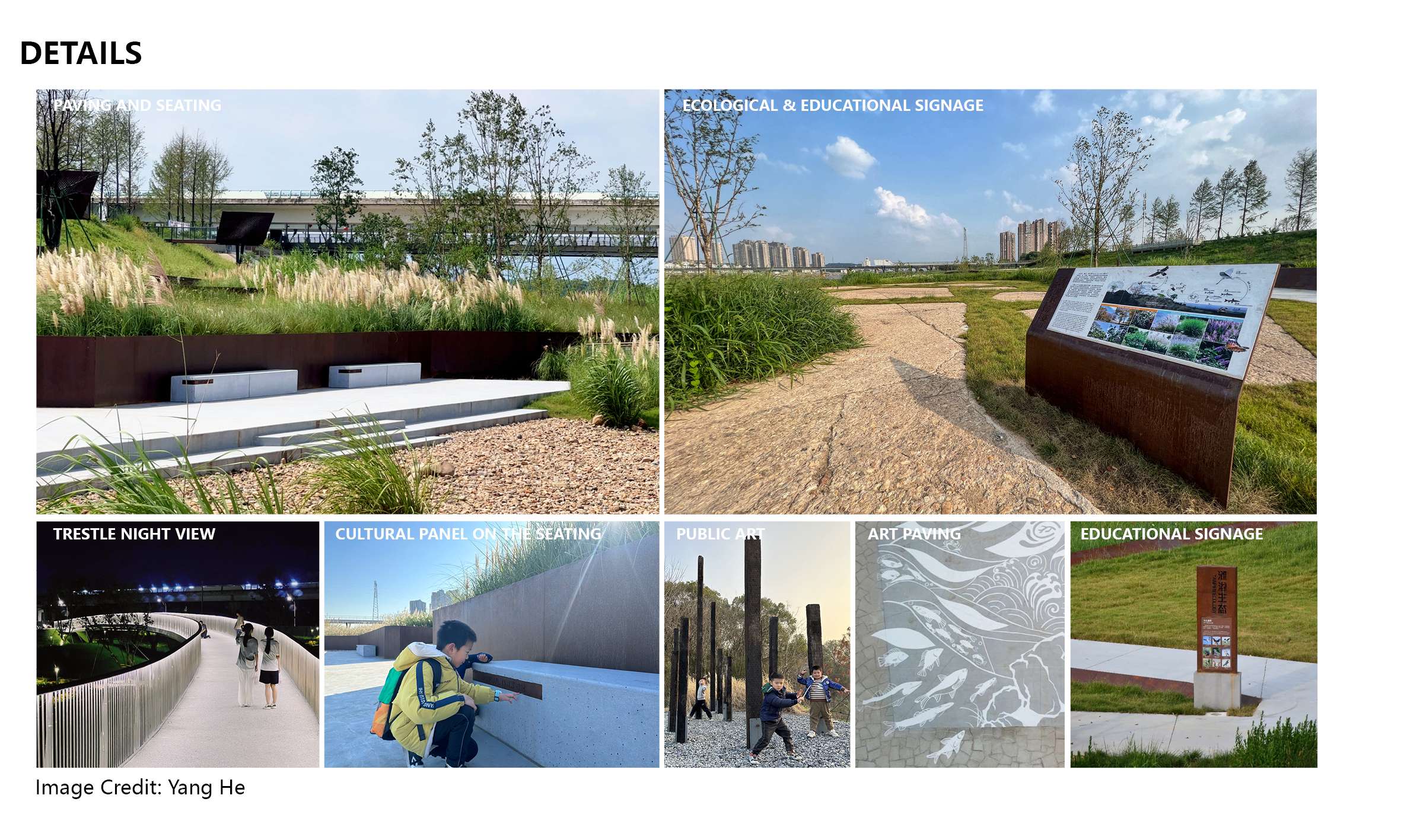
Paisaje en el proceso: Jinjiao Shore Park en Lanxi
Landscape in the process: Jinjiao Shore Park in Lanxi
GENERAL OVERVIEW
Jinjiao Shore Park embraces natural dynamics as integral landscape elements, ecologically revitalizing urban wastelands while preserving existing wilderness features to cultivate climate-resilient landscapes shaped by natural succession. Serving dual roles as a hub for nature-based education/agritourism and an urban refuge for birds, fish, and insects, it pioneers low-cost, low-maintenance approaches to sustainable urban landscape development.
1 Background
Jinjiao Shore Park, located along the west bank of Lanjiang River in Lanxi City, spans 105,498 m². The site outside the river embankment was once an industrial warehouse and wharf.
2 Objectives
Embracing natural dynamics as landscape elements, the project creates urban wilderness habitats outside the embankment that adapt to Lanjiang River’s water fluctuations, providing riverside sanctuaries for native species. Within the embankment, agricultural landscapes are reimagined through land art rooted in local cultural narratives.
3 Features
3.1 Rebirth of Abandoned Land and Preservation of Wilderness Landscapes
Fluctuations in water levels of up to 10 meters have turned this site into an urban wasteland filled with reeds and debris. In his book "Philosophy Gone Wild", American philosopher Holmes Rolston proposed an environmental ethic that uses wilderness as a means to reconcile the relationship between humans and nature.
The revitalization begins by restoring compacted wharf soil through selective excavation, blending sand and straw to enhance permeability while installing Corten steel plates that align with the terrain to stabilize multi-level embankments. Preserving existing reed habitats, the park adaptively reuses the old wharf as viewing platforms and maintains the historic gravel riverbank alongside rugged revetments, connected via waterfront boardwalks. Elevation-specific terraces enclosed by Corten structures feature nature-simulated ecological planting—strategically combining flood/drought-resistant vegetation according to Lanjiang River's flooding frequencies.
Collectively, the vertical topography and neo-naturalistic vegetation create dynamic urban wilderness ecosystems that rhythmically respond to water fluctuations, sustaining native biodiversity.
3.2 Artistic Farmland Transformation
Most of the land within the river embankment is used for agriculture. The design combines the mythical story of local immortals playing Go (Weiqi) and manifests the Go board on the earth through land art. Each season—Spring seeding, summer plowing, autumn harvest, and winter storage— offers distinctive scenery and activities throughout the year, making it an important place for agricultural tourism and natural study tour.
3.3 Addressing The Height Difference Between The Inside And Outside of The River Embankment
The river embankment has a 3-meter height differential between the inside and outside. The design softens the elevation transition between the embankment and the waterfront through naturalistic slope plantings and stepped terraces. Inspired by a local mythical story about an immortal who whips a stone to turn it into a goat, an elevated trestle is designed to symbolize the immortal's whip, connecting the park entrance, artistic farmland, children's playground and urban wilderness, addressing height and traffic flow issues.
4 Conclusion
Through these approaches, designers guide public appreciation of nature's authentic dynamics. The park adapts to flood rhythms, revealing ever-changing landscapes across seasons while fostering an urban habitat where humans and wildlife coexist harmoniously.
Technical Consultants: Yiping Xia, Yang Su
